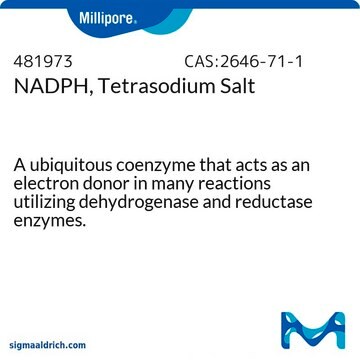F7807
Prostaglandin F Synthase human
recombinant, expressed in E. coli, ≥90% (SDS-PAGE)
Synonyme(s) :
17-beta-hydroxysteroid dehydrogenase type 5, AKR1C3, aldo-keto reductase family 1 member C3, indanol dehydrogenase
About This Item
Produits recommandés
Produit recombinant
expressed in E. coli
Niveau de qualité
Description
contains a C-terminal hexahistidine tag
Pureté
≥90% (SDS-PAGE)
Forme
liquid
Activité spécifique
≥0.4 μmol/mg protein
Poids mol.
~37 kDa
Numéro d'accès NCBI
Conditions d'expédition
dry ice
Température de stockage
−70°C
Informations sur le gène
human ... AKR1C3(8644)
Application
Actions biochimiques/physiologiques
Définition de l'unité
Code de la classe de stockage
10 - Combustible liquids
Classe de danger pour l'eau (WGK)
WGK 1
Point d'éclair (°F)
Not applicable
Point d'éclair (°C)
Not applicable
Certificats d'analyse (COA)
Recherchez un Certificats d'analyse (COA) en saisissant le numéro de lot du produit. Les numéros de lot figurent sur l'étiquette du produit après les mots "Lot" ou "Batch".
Déjà en possession de ce produit ?
Retrouvez la documentation relative aux produits que vous avez récemment achetés dans la Bibliothèque de documents.
Notre équipe de scientifiques dispose d'une expérience dans tous les secteurs de la recherche, notamment en sciences de la vie, science des matériaux, synthèse chimique, chromatographie, analyse et dans de nombreux autres domaines..
Contacter notre Service technique






